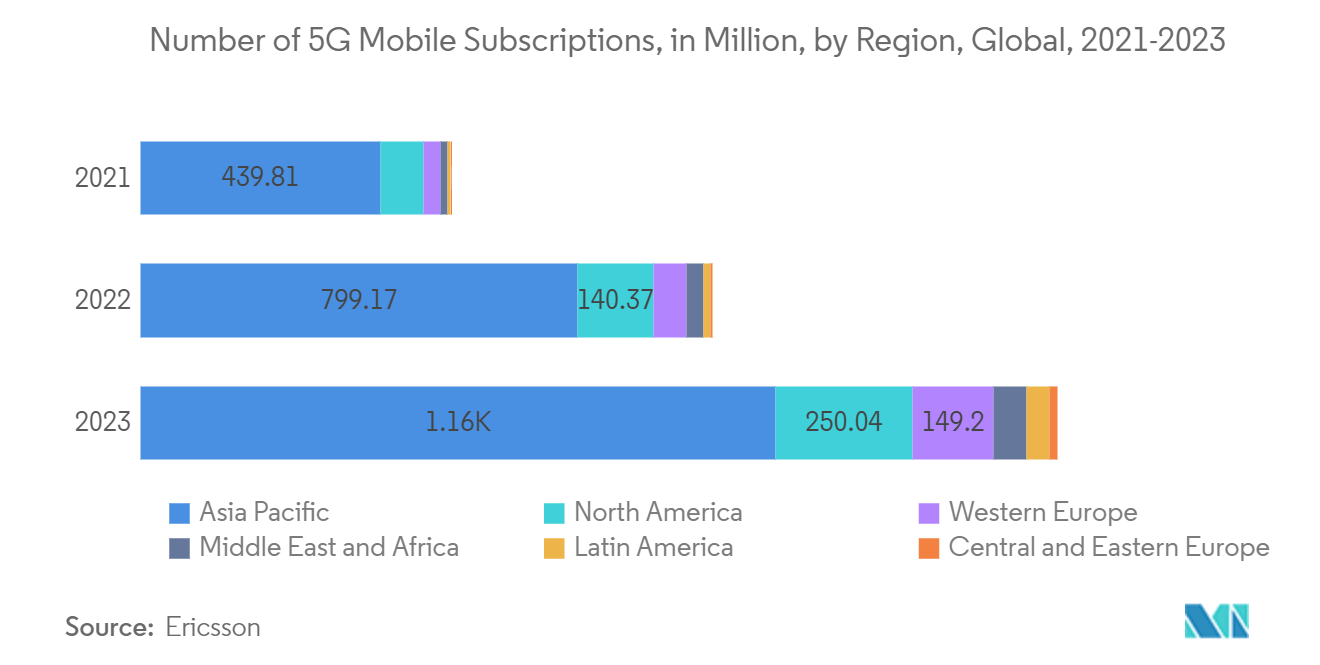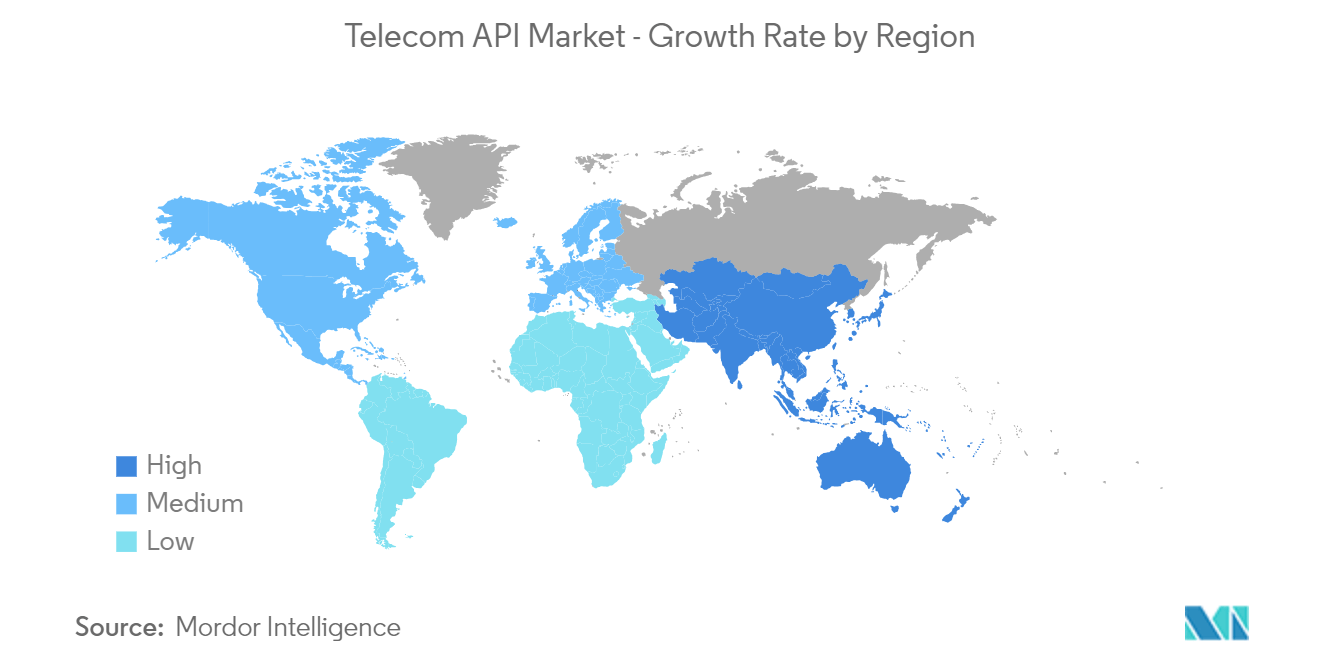Market Trends of Telecom API Industry
Hybrid Segment to hold major share
- Communication, which aims to connect any two individuals, is currently shifting toward man-to-machine and machine-to-machine connections for exchanging various sorts of data. Because of the various types of data involved in the process, this transmission scenario, with an ever-increasing number of active and passive users, sets the groundwork for a range of communication protocols. Middleware, in this ever-expanding communication arena, can be thought of as a set of hardware and software that is used to connect different platforms with end-users, who are increasing in number on a daily basis, with a possible widespread use over any region spanning from a few meters to several kilometers.
- The telecommunications sector is significantly transitioning from physical to digital networks. The telecom industry comprises a wide range of consumers that need to be offered a wide spectrum of services, irrespective of their devices and locations. To cater to the same, telecom carriers seek cloud solutions for delivering their services in response to consumer demands.
- This rise in demand for microservices can be considered a sign of the natural evolution of enterprise application development. Technology trends, such as migration to cloud platforms and a shift toward an API economy, are being witnessed in the current market scenario. Web-based applications can help service providers in the telecom industry improve the quality and reliability of their mobile communications, broadband services, and open-source technologies, boost their market share, and improve their profitability.
- Focusing on improving the customer experience, telecommunications players are revising microservices architecture (MSA) in their IT and network architectural capabilities to support extensibility and elasticity. The supportive government regulations worldwide also encourage telecom players to open their communication systems via APIs. This is expected to promote the growth of middleware architecture solutions across telecommunications business models.
- The Mobile Application Support Environment (MASE) is a distributed system that works on both the mobile device and a device known as a mobility gateway. The latter acts as a bridge between fixed and wireless network infrastructures. It is an agent for mobile clients, often linked over unreliable wireless access networks with limited bandwidth. MASE gives access to the UMTS adaption layer (UAL), which allows unified access to all conceivable underlying networks for applications and middleware components. An additional general support layer provides the functionality required for distributed systems.
- The evolution of cellular network technology has allowed users to experience faster data speeds and lower latency. It has also prompted the rapidly increasing use of services and applications that are data-heavy. The significant rise in the volume of data being carried by cellular networks has been primarily driven by consumer demand for video and business and consumer moves to the use of cloud services. This factor is expected to drive the need for a 5G connection that offers fast and high-capacity networks. Moreover, with the introduction of 5G in the coming years, telecom companies are expected to be eager to focus on edge computing solutions, which would be enabled by middleware architecture vendors.

North America to Hold Major Market Share
- The region's dominance can be attributed to the recent increase in mobility and the explosion of smart mobile devices due to the consumerization of IT, thereby helping the Telecom API grow in the region.
- Moreover, with the rising demand for cost-effective and user-friendly browser-based communication solutions, many notable vendors are looking to introduce vertical-specific WebRTC and cloud solutions in the region, which is expected to boost the market's growth.
- The region comprises the United States and Canada. A significant number of mobile network operators are already leveraging telecom APIs to support robocall detection and unwanted call management in the United States. Some of these same processes and procedures will become bridges toward the mediation of LoT network authentication and authorization.
- The US is one of the foremost innovators and investors in the 5G market, owing to its high rate of investment in 5G deployment. The telecom industry in the country accounts for a significant portion of the global consumption of 5G technology.
- In January 2023, to create safe 5G network slicing and enhance Canada's security and defense, the University of Waterloo announced the creation of the "5G and Beyond" mobile network technology collaboration. The organization has received funding from the Department of National Defense (DND) as part of its Innovation for Defense Excellence and Security (IDEaS) program. A group of computer scientists from the University of Waterloo is leading the multi-partner consortium. It will cost CAD 1.5 million (USD 1.12 million).
- During this crisis, Canada's facilities-based telecommunications service providers, the companies that build and operate Canada's telecommunications networks, are focused on ensuring After years of investing in network infrastructure and operations, resulting in incredibly resilient networks in the face of intensified network traffic and altered usage patterns, the telecom API market is growing.

